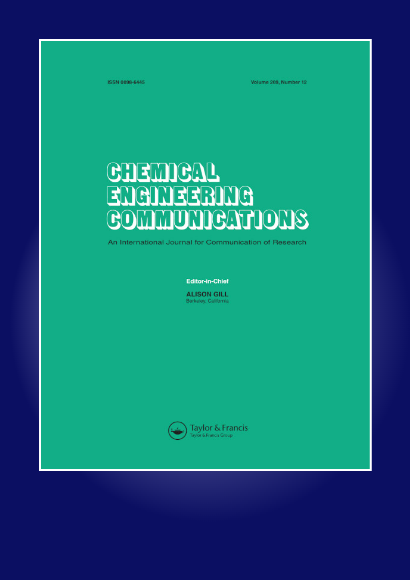Effect of storage time and temperature on the stability and rheological properties of starch-soluble dietary fiber nanocomposite stabilized emulsion
IF 2
4区 工程技术
Q3 ENGINEERING, CHEMICAL
引用次数: 0
Abstract
AbstractNanocomposites are a promising material for the stabilization and rheology modification of food emulsions due to their unique physicochemical properties. The effects of storage time and temperature on the rheological and stability properties of Bambara groundnut starch-soluble dietary fiber nanocomposite (STASOL) stabilized emulsions were evaluated. Emulsions were formulated with orange oil (30%), water (50%) and STASOL (20%). The backscattering profile of emulsions stored at 5 and 45 °C showed the least and most separation between scans, respectively. On day 20, the emulsions stored at 45 °C had completely separated into two layers. The viscosity of emulsions stored at 20 and 45 °C decreased after the third day while that of emulsions stored at 5 °C had significantly (p < 0.05) decreased after nine days. Time and temperature both played a major role in the destabilization of emulsions, with those stored at 5 and 45 °C showing the least and most destabilization over time, respectively.Keywords: Bambara groundnutemulsionsnanocompositerheologystability Authors’ contributionsYvonne Maphosa: conceived and designed the experiments; performed the experiments; analyzed and interpreted the data; authored the paper. Daniel Ikhu-Omoregbe: conceived and designed the engineering experiments; interpreted the data; proofread the paper. Oladayo Adeyi: conceived and designed the engineering experiments; interpreted the data; authored part of the paper. Victoria Jideani: conceived and designed the experiments; analyzed and interpreted the data; contributed reagents, materials and analysis tools.Disclosure statementThe authors declare that they have no known competing financial interests or personal relationships that could have appeared to influence the work reported in this paper.Additional informationFundingThis work was supported by the South African National Research Foundation, the Cape Peninsula University of Technology Vice Chancellor’s Fund and the Cape Peninsula University of Technology Research Fund.贮藏时间和温度对淀粉溶性膳食纤维纳米复合稳定乳稳定性和流变性质的影响
摘要纳米复合材料以其独特的物理化学性质,在食品乳剂的稳定和流变改性方面具有广阔的应用前景。研究了贮藏时间和温度对班巴拉花生淀粉溶性膳食纤维纳米复合材料(STASOL)稳定乳剂流变学和稳定性的影响。用橙油(30%)、水(50%)和STASOL(20%)配制乳剂。在5°C和45°C下储存的乳剂的后向散射曲线分别显示出扫描间隔最小和最大。在第20天,在45℃下储存的乳剂完全分离成两层。20°C和45°C条件下乳剂的黏度在第3天后降低,5°C条件下乳剂的黏度在第9天后显著降低(p < 0.05)。时间和温度对乳剂的不稳定性都起着重要的作用,在5°C和45°C下储存的乳剂随着时间的推移,其不稳定性分别最小和最大。关键词:班巴拉地面纳米乳液纳米复合材料流变稳定性作者贡献syvonne Maphosa:构思和设计实验;进行实验;分析和解释数据;撰写论文。Daniel Ikhu-Omoregbe:构思和设计工程实验;解释数据;校对论文。Oladayo Adeyi:构思和设计工程实验;解释数据;撰写了部分论文。Victoria Jideani:构思和设计实验;分析和解释数据;提供试剂、材料和分析工具。披露声明作者声明,他们没有已知的竞争经济利益或个人关系,可能会影响本文所报道的工作。本研究得到了南非国家研究基金会、开普半岛科技大学副校长基金和开普半岛科技大学研究基金的支持。
本文章由计算机程序翻译,如有差异,请以英文原文为准。
求助全文
约1分钟内获得全文
求助全文
来源期刊

Chemical Engineering Communications
工程技术-工程:化工
CiteScore
5.50
自引率
4.00%
发文量
80
审稿时长
6 months
期刊介绍:
Chemical Engineering Communications provides a forum for the publication of manuscripts reporting on results of both basic and applied research in all areas of chemical engineering. The journal''s audience includes researchers and practitioners in academia, industry, and government.
Chemical Engineering Communications publishes full-length research articles dealing with completed research projects on subjects such as experimentation (both techniques and data) and new theoretical models. Critical review papers reporting on the current state of the art in topical areas of chemical engineering are also welcome; submission of these is strongly encouraged.
 求助内容:
求助内容: 应助结果提醒方式:
应助结果提醒方式:


